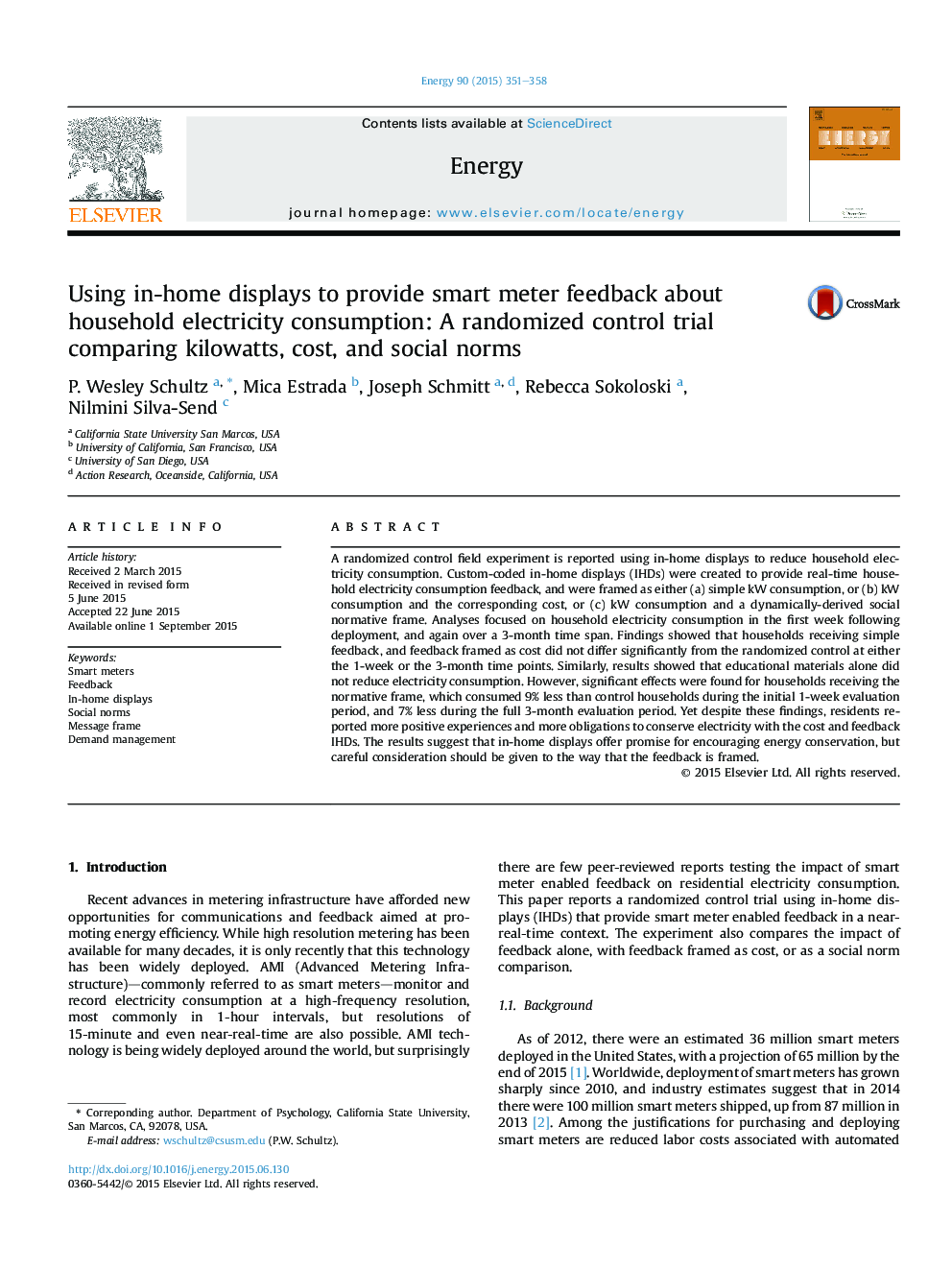| Article ID | Journal | Published Year | Pages | File Type |
|---|---|---|---|---|
| 1731739 | Energy | 2015 | 8 Pages |
•Providing residents with normative framed electricity feedback reduced energy use.•Cost-framed feedback is preferred by residents, but did not reduce energy use.•Information increases knowledge about energy use, but does not reduce consumption.•Special consideration should be given to the frame accompanying real-time feedback.
A randomized control field experiment is reported using in-home displays to reduce household electricity consumption. Custom-coded in-home displays (IHDs) were created to provide real-time household electricity consumption feedback, and were framed as either (a) simple kW consumption, or (b) kW consumption and the corresponding cost, or (c) kW consumption and a dynamically-derived social normative frame. Analyses focused on household electricity consumption in the first week following deployment, and again over a 3-month time span. Findings showed that households receiving simple feedback, and feedback framed as cost did not differ significantly from the randomized control at either the 1-week or the 3-month time points. Similarly, results showed that educational materials alone did not reduce electricity consumption. However, significant effects were found for households receiving the normative frame, which consumed 9% less than control households during the initial 1-week evaluation period, and 7% less during the full 3-month evaluation period. Yet despite these findings, residents reported more positive experiences and more obligations to conserve electricity with the cost and feedback IHDs. The results suggest that in-home displays offer promise for encouraging energy conservation, but careful consideration should be given to the way that the feedback is framed.
